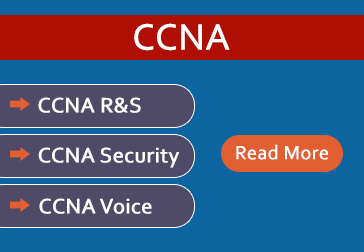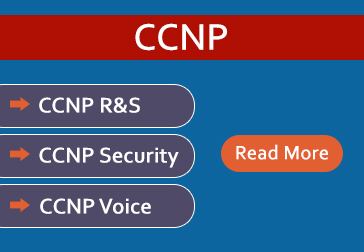All COURSES Offered
Ethical Hacking Training
Ethical Hacking And Countermeasures Expert (EHCE)
Course Details
This course is meant for those professionals who are looking for comprehensive and total knowledge in the network security domain. This is the only course which teaches both hacking and countermeasure techniques.

Ethical Hacking
This course is meant for those professionals who are looking for comprehensive and total knowledge in the network security domain. This is the only course which teaches both hacking and countermeasure techniques. And in keeping with IPST's standards, this course is entirely hands on and real time oriented. And need we say, the instructors are network security and intrusion specialists with several years of experience.
Brief Overview:
Introduction to Ethical Hacking
Footprinting, Scanning, and Enumeration
Hacking Web servers and Web applications
DoS, SQL injection, Buffer overflow attacks
Cryptography
Wireless hacking
Linux Hacking
Phishing
Countermeasures
Ethical Hacking & Countermeasures Expert
Introduction to Ethical Hacking
What is Hacking
Who is a Hacker
Skills of a Hacker
Types of Hackers
Reasons for Hacking
Who are at the risk of Hacking attacks
Effects of Computer Hacking on an organization
Network Security Challenges
Elements of Information Security
The Security, Functionality & Usability Triangle
What is Ethical Hacking
Why Ethical Hacking is Necessary
Scope & Limitations of Ethical Hacking
What is Penetration Testing
What is Vulnerability Auditing
FootPrinting
What is FootPrinting
Objectives of FootPrinting
Finding a company's details
Finding a company's domain name
Finding a company's Internal URLs
Finding a company's Public and Restricted URLs
Finding a company's Server details
Finding the details of domain registration
Finding the range of IP Address
Finding the DNS information
Finding the services running on the server
Finding the location of servers
Traceroute analysis
Tracking e-mail communications
Scanning
What is network scanning
Objectives of network scanning
Finding the live hosts in a network
SNMP Enumeration
SMTP Enumeration
DNS Enumeration
Finding open ports on a server
Finding the services on a server
OS fingerprinting
Server Banner grabbing tools
What is a Vulnerability Scanning
Vulnerability Scanner tools
Finding more details about a vulnerability
What is a proxy server
How does proxy server work
Types of proxy servers
How to find proxy servers
Why do hackers use proxy servers
What is a TOR network
Why hackers prefer to use TOR networks
Hacking Web Servers & Web Applications
What is a web server
Different webserver applications in use
Why are webservers hacked & its consequences
Directory traversal attacks
Website defacement
Website password brute forcing
How to defend against web server hacking
Session Hijacking
What is session hijacking
Dangers of session hijacking attacks
Session hijacking techniques
Cross-Site scripting attack
Session hijacking tools
How to defend against session hijacking
SQL Injection
What is SQL Injection
Effects of SQL Injection attacks
Types of SQL Injection attacks
SQL Injection detection tools
Evading Firewalls, IDS & Honeypots
What is a Firewall
What are the functions of a Firewall
What is an IDS
How does an IDS work
SPAN
IDS tools
What is a honeypot
Types of honeypots
Honeypot tools
Honeypot detection tools
Buffer Overflow
What is a buffer
Understanding usage of buffers in applications
What is buffer overflow
Simple buffer overflow in C programming
How to detect a buffer overflow
How to defend against buffer overflow attacks
Denial of Service
What is a DoS attack
What is a DDoS attack
Symptoms of a Dos attack
DoS attack techniques
What is a Botnet
Defending DoS attacks
Cryptography
What is Cryptography
Types of cryptography
Cipher algorithms
Public key infrastructure
What is a Hash
Cryptography attacks
System Hacking
What is system Hacking
Goals of System Hacking
Password Cracking
Password complexity
Finding the default passwords of network devices and softwares
Password cracking methods
A- Online password cracking
A- 1 Man-in-the-middle attack
A- 2 Password guessing
Offline password cracking
A- 1 Brute force cracking
A- 2 Dictionary based cracking
A- 3 Hybrid attack
USB password stealers
Elcomsoft Distributed password recovery tools
Active password changer
What is a keylogger
How to deploy a keylogger to a remote pc
How to defend against a keylogger
Sniffers
What is a sniffer
How sniffer works
Types of sniffing
A- 1 Active sniffing
A- 2 Passive Sniffing
What is promiscuous mode
How to put a PC into promiscuous mode
What is ARP
ARP poison attack
Threats of ARP poison attack
How MAC spoofing works
MAC Flooding
What is a CAM Table
How to defend against MAC Spoofing attacks
How to defend against Sniffers in network
Phishing
What is Phishing
How Phishing website is hosted
How victims are tricked to access Phishing websites
How to differentiate a Phishing webpage from the original webpage
How to defend against Phishing attacks
Malware
What is malware
Types of malware
Virus
What is a virus program
What are the properties of a virus program
How does a computer get infected by virus
Types of virus
Virus making tools
How to defend against virus attacks
Worm
What is a worm program
How worms are different from virus
Trojan
What is a Trojan horse
How does a Trojan operate
Types of Trojans
Identifying Trojan infections
How to defend against Trojans
Spyware
What is a spyware
Types of spywares
How to defend against spyware
Rootkits
What is a Rootkit
Types of Rootkits
How does Rootkit operate
How to defend against Rootkits
Wireless Hacking
Types of wireless networks
Wi-Fi usage statistics
Finding a Wi-Fi network
Types of Wi-Fi authentications
Using a centralized authentication server
Using local authentication
Types of Wi-Fi encryption methods
WEP
WPA
WPA2
How does WEP work
Weakness of WEP encryption
How does WPA work
How does WPA2 work
Hardware and software required to crack Wi-Fi networks
How to crack WEP encryption
How to crack WPA encryption
How to crack WPA2 encryption
How to defend against Wi-Fi cracking attacks
Kali Linux
What is Kali Linux
How Kali Linux is different from other Linux distributions
What are the uses of Kali Linux
Tools for Footprinting, Scanning & Sniffing
What is Metasploit framework
Using Metasploit framework to attack Wiindows machines
Using Metasploit framework to attack Android devices
Penetration Testing
What is Penetration Testing
Types of Penetration Testing
What is to be tested
Testing the network devices for mis-configuration
Testing the servers and hosting applications for mis-configuration
Testing the servers and hosting applications for vulnerabilities
Testing wireless networks
Testing for Denial of Service attacks
Counter Measure Techniques for Network level attacks
Types of Firewall
Packet Filtering Firewall
Circuit-Level Gateway Firewall
Application-Level Firewall
Stateful Multilayer Inspection Firewall
Limitations of a Firewall
IDS / IPS
What is an IDS
What is a IPS
Difference between IDS & IPS
Placement of IDS in the Network
Configuring an IDS in the Network
Placement of IPS in the Network
Configuring an IPS in the Network
UTM / Next-Generation Firewall
What is a UTM
Features of UTM
Difference between a Firewall & a UTM
Placement of UTM in the Network
Configuring a UTM in the Network
Monitoring attacks using UTM
Configuring IPS module in UTM to detect and stop attacks
Counter Measure Techniques for Local Systems
Identifying the Vulnerabilities of a system
Understanding the Vulnerabilities of a system
CVE ID
Bugtraq ID
Patch Management
Identifying the patch for a Vulnerability
Downloading the Patch
Testing the patch for stability in test environment
Deploying the patch to Live Network
Finding the missing updates in an Operating System
Microsoft Baseline Security Analyzer
Belarc Advisor
Counter Measure Techniques for Malware Attacks
Scanning systems for Malware infections
Types of anti-malwares
Anti-Virus
Anti-Worm
Anti-Trojan
Anti-Rootkit
Internet Security Suites
HIDS
HIPS
Course Duration: 2 Weeks (40 hours including practicals)
Course Schedule
Various Date & Time schedule are given as below, any one of Batch/Track can be taken.
| Month | Batch/Track | Starting Date | Time |
| February April June August October November |
Morning | 15th | 8.30 a.m. to 10.30 a.m. |
| January March May July September December |
Evening | 15th | 5.00p.m. to 7.00 p.m. |
Practical's/labs for Morning batch can be done 2 hour after the theory session
Practical's/labs for Evening batch can be done 2 hour before the theory session
If 15th is a Sunday or National holiday then the course will start on next working day.
Faculty: Team of over 250 highly experienced practical engineers with actual working experience (International Exposure)
Course Fee
The Classroom Ethical Hacking and Countermeasures Expert (EHCE) training conducted at IPST, Kanpur - India is priced at
INR 9,500* /- Pay Now
* All prices subject to a 14% Service Tax Charge. Rates are quoted in U.S. dollars, Britain Pounds and Nigerian Nairas are subject to change according to Foreign Exchange rates.
* For online Credit/Debit Card payment, surcharge 5% is charged to the Course fee.
Fee Payment Options:
1. Pay via Debit / Credit Card:
2. Pay Via Paypal:
(Paypal option will work only for payments made from outside India. PayPal cannot be used for domestic payments within India.)








